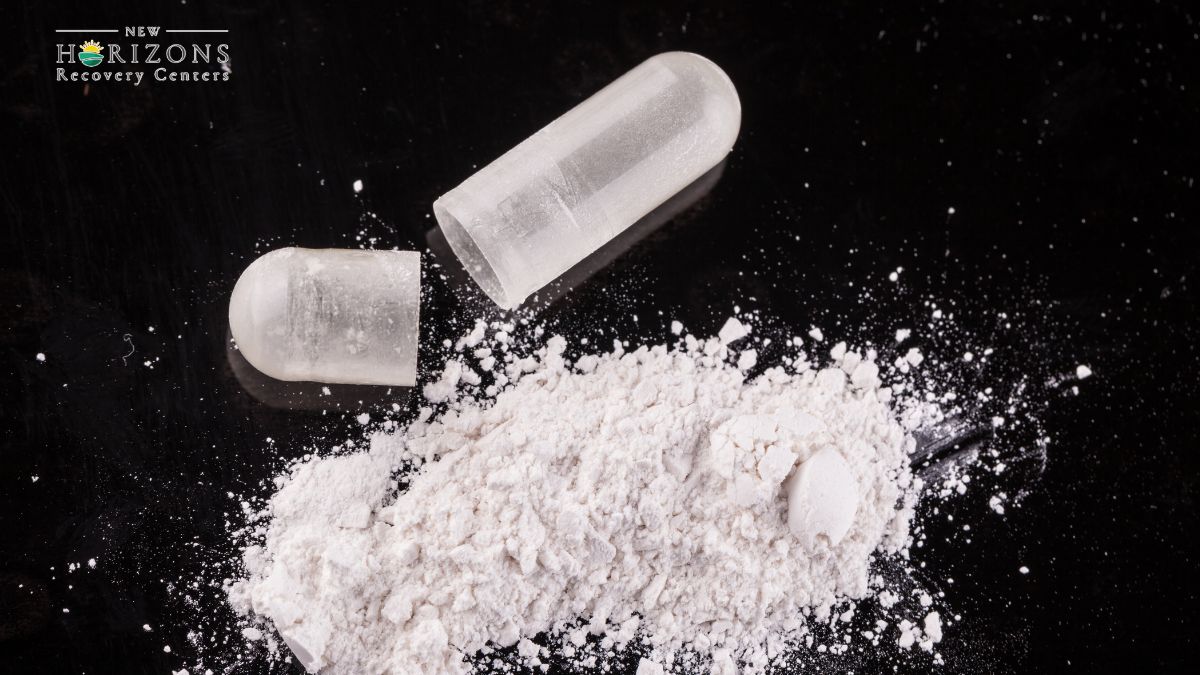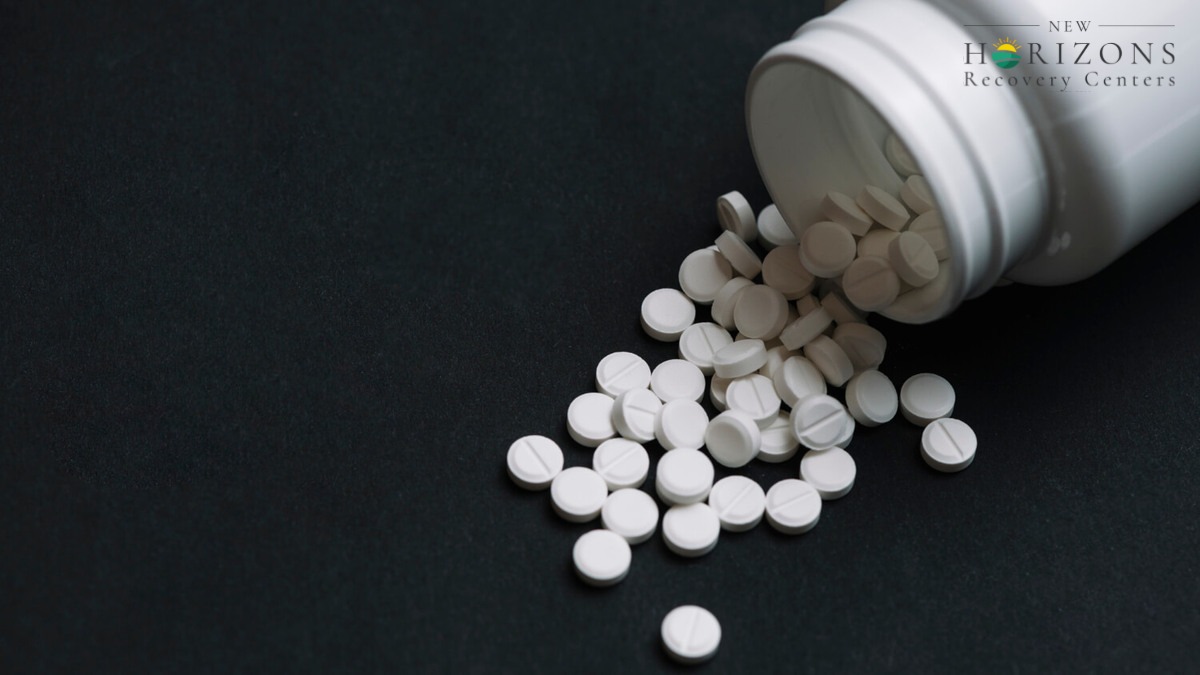Understanding Addiction Statistics

When delving into heroin addiction statistics, it is crucial to have a comprehensive overview of addiction data and understand the prevailing trends in substance use. These statistics provide valuable insights into the prevalence and impact of heroin addiction on individuals and society as a whole.
Overview of Addiction Data
Recent data from the National Institute on Drug Abuse (NIDA) indicates a significant decrease in the percentage of adolescents reporting substance use in 2021. This downward trend is a positive development in the fight against drug abuse and addiction among young individuals. However, it is essential to continue monitoring these trends to ensure sustained progress in combating substance abuse.
Analyzing addiction data allows researchers and policymakers to identify patterns, risk factors, and areas for intervention. By understanding the scope of addiction and its impact on different demographics, effective prevention and treatment strategies can be implemented to address the underlying issues contributing to substance use disorders.
Trends in Substance Use
According to the Centers for Disease Control and Prevention (CDC), the annual average rates of past-year heroin use have shown an upward trajectory over the years. From 1.6 per 1,000 persons aged 12 years and older in 2002–2004, the rate increased to 2.6 per 1,000 in 2011–2013, representing a 62.5% surge. Similarly, the rate of individuals meeting diagnostic criteria for past-year heroin abuse or dependence has also seen a substantial increase, rising from 1.0 per 1,000 to 1.9 per 1,000 during the study period.
Moreover, the data indicates that past-year heroin use rates were higher among men than women across all time intervals. However, the gap between male and female rates has narrowed in recent years. Additionally, the rate of past-year heroin use among non-Hispanic whites has increased significantly, highlighting the need for targeted interventions to address the rising trend among specific demographic groups.
By monitoring trends in substance use, policymakers and healthcare professionals can tailor interventions and prevention programs to target populations most at risk of heroin addiction. Understanding the evolving landscape of substance abuse is essential for developing effective strategies to combat addiction and reduce the associated societal burdens.
Heroin Addiction Statistics

When examining heroin addiction statistics, it is essential to consider two key aspects: heroin overdose rates and the demographics associated with drug overdose deaths.
Heroin Overdose Rates
The rate of drug overdose deaths involving heroin has shown fluctuations over recent years. According to the CDC, the age-adjusted rate of drug overdose deaths involving heroin was lower in 2021 compared to 2020. In 2020, the rate was 4.1 per 100,000 standard population, while in 2021, it decreased to 2.8 per 100,000 standard population. This decline may reflect changes in drug use patterns or improved access to treatment and harm reduction strategies.
YearHeroin Overdose Rate (per 100,000)20103,036201615,469202013,16520219,17320225,871
Figures from the National Institute on Drug Abuse
It is noteworthy that while the total number of heroin-involved overdose deaths has decreased overall, the proportion of deaths co-involve heroin and fentanyl has significantly increased to nearly 80% in 2022. This shift highlights the changing landscape of substance use and the challenges posed by the introduction of potent synthetic opioids into the illicit drug market.
Demographics and Drug Overdose Deaths
Understanding the demographics associated with drug overdose deaths is crucial for developing targeted prevention and intervention strategies. The CDC reports that drug overdose death rates were higher in 2021 than in 2020 for all age groups 25 and over. This trend underscores the persistent challenges posed by substance use disorders, particularly among older populations.
Additionally, data from the CDC reveals that between 2002 and 2013, heroin overdose death rates nearly quadrupled in the United States, from 0.7 deaths to 2.7 deaths per 100,000 population. During this period, there was a significant increase in the rates of heroin-related fatalities, highlighting the urgent need for comprehensive public health responses to address this escalating crisis.
In 2013 alone, an estimated 517,000 individuals reported past-year heroin abuse or dependence, representing a nearly 150% increase since 2007. These statistics underscore the pervasive nature of heroin addiction and the urgent need for evidence-based interventions to prevent overdose deaths and support individuals struggling with substance use disorders.
Treatment Approaches for Heroin Addiction

When it comes to addressing heroin addiction, a combination of pharmacological treatments and behavioral therapies is often employed to help individuals overcome this serious substance use disorder.
Pharmacological Treatments
Scientific research, as highlighted by the National Institute on Drug Abuse, has shown that pharmacological treatment of opioid use disorder plays a vital role in increasing retention in treatment programs and reducing drug use, infectious disease transmission, and criminal activity. Medications developed to treat opioid use disorders target the same opioid receptors as the addictive drug but are safer and less likely to lead to the harmful behaviors associated with substance use disorder.
MedicationMechanism of ActionBenefitsMethadoneBinds to opioid receptors, reducing withdrawal symptoms and cravingsSuppresses withdrawal symptoms and reduces drug cravingsBuprenorphinePartial agonist that activates opioid receptors, reducing cravings and withdrawal symptomsHelps manage cravings and minimizes withdrawal symptomsNaltrexoneBlocks opioid receptors, reducing the rewarding effects of heroinPrevents relapse by blocking the effects of opioids
Pharmacological treatments are often used in conjunction with counseling and behavioral therapies to provide a comprehensive approach to heroin addiction treatment.
Behavioral Therapies
In addition to pharmacological interventions, behavioral therapies play a crucial role in treating heroin use disorder. According to the National Institute on Drug Abuse, therapies such as contingency management and cognitive-behavioral therapy have been demonstrated to be effective in treating heroin addiction, especially when combined with medications.
Behavioral therapies aim to modify attitudes and behaviors related to drug use, enhance life skills, and improve coping mechanisms to prevent relapse. These therapies can help individuals develop healthy strategies for managing triggers, cravings, and stressors that may contribute to substance use.
By integrating both pharmacological treatments and behavioral therapies into a comprehensive treatment plan, individuals struggling with heroin addiction can receive the support and tools needed to overcome their dependency and work towards recovery. The combination of these approaches addresses the physical, psychological, and behavioral aspects of addiction, increasing the likelihood of successful outcomes in treatment programs.
Risks and Consequences of Heroin Use

Exploring the risks and consequences associated with heroin use sheds light on the detrimental impacts it can have on individuals. From health risks and infections to dependency and withdrawal symptoms, understanding these factors is crucial in addressing the challenges of heroin addiction.
Health Risks and Infections
Individuals who inject heroin are at high risk of contracting infectious diseases such as HIV, hepatitis, and bacterial infections of the skin, bloodstream, and heart, including endocarditis. The act of injecting heroin can also lead to collapsed veins, which can impede blood flow and cause further health complications. These serious health risks underscore the importance of seeking proper medical care and support for individuals struggling with heroin addiction.
Dependency and Withdrawal Symptoms
One of the significant consequences of heroin use is the development of dependency and subsequent withdrawal symptoms. Repeated use of heroin can lead to tolerance, where individuals require increasing amounts of the drug to achieve the desired effects. This cycle of tolerance can quickly escalate into dependency, where the body becomes reliant on heroin to function normally.
When individuals dependent on heroin abruptly stop using the drug, they often experience withdrawal symptoms. These symptoms can manifest as restlessness, muscle and bone pain, diarrhea, vomiting, and cold flashes with goosebumps. The challenging nature of these withdrawal symptoms can make it difficult for individuals to break free from heroin addiction without proper medical and psychological support.
Moreover, repeated heroin use can result in heroin use disorder, a chronic brain disorder characterized by continued heroin use despite adverse consequences. Individuals with heroin use disorder may face various challenges in their daily lives, including health issues and difficulties fulfilling responsibilities at work, school, or home [1].
Understanding the health risks, infections, dependency, and withdrawal symptoms associated with heroin use is essential in developing comprehensive strategies for addressing heroin addiction and supporting individuals in their journey towards recovery. By raising awareness about these risks and consequences, we can work towards promoting healthier choices and providing necessary resources for those affected by heroin addiction.
Heroin Overdose Prevention

In the realm of heroin addiction, preventing overdoses is paramount to saving lives and reducing the devastating impact of this drug on individuals and communities. Two key aspects of heroin overdose prevention are the availability and use of naloxone for overdose reversal and understanding the sobering heroin overdose statistics.
Naloxone and Overdose Reversal
Naloxone is a medication that plays a crucial role in treating heroin overdoses by blocking the effects of opioids on the body. It is available in different forms, including nasal spray and injectable formulations. Individuals at risk of an overdose, as well as their loved ones and healthcare providers, are encouraged to carry naloxone to rapidly reverse the effects of an opioid overdose and prevent fatalities.
Heroin Overdose Statistics
The statistics surrounding heroin overdoses provide a stark reality of the impact of this drug on public health. According to the National Institute on Drug Abuse, drug overdose deaths involving heroin surged from 3,036 in 2010 to a peak of 15,469 in 2016. Subsequently, there has been a downward trend in overdose deaths, with 13,165 deaths reported in 2020, 9,173 in 2021, and 5,871 in 2022. Despite the overall decrease in heroin-related deaths, the proportion of these fatalities co-involved heroin and fentanyl has risen significantly, reaching nearly 80% in 2022.
A report by the CDC reveals that between 2002 and 2013, heroin overdose death rates in the United States nearly quadrupled, escalating from 0.7 deaths to 2.7 deaths per 100,000 population. The rates continued to climb, almost doubling from 2011 to 2013. Additionally, in 2013 alone, an estimated 517,000 individuals reported past-year heroin abuse or dependence, marking a staggering 150% increase since 2007.
Understanding these heroin overdose statistics is crucial for policymakers, healthcare professionals, and communities to implement targeted interventions to prevent overdoses, reduce substance abuse, and provide support for individuals struggling with heroin addiction. By promoting awareness, education, and access to life-saving measures like naloxone, we can work together to combat the opioid crisis and save lives.
Changing Patterns in Heroin Use

As the landscape of substance use evolves, it is crucial to examine the shifting trends in heroin consumption to better understand the implications for public health and intervention strategies.
Past-Year Heroin Use Trends
Recent data from the United States reveals a concerning increase in the rates of past-year heroin use. Between 2002–2004 and 2011–2013, the annual average rates of past-year heroin use surged from 1.6 per 1,000 persons aged ≥12 years to 2.6 per 1,000, marking a substantial 62.5% increase over the period. This rise is further underscored by a significant uptick in the number of individuals meeting diagnostic criteria for past-year heroin abuse or dependence, with rates climbing from 1.0 per 1,000 to 1.9 per 1,000, representing a 90.0% increase overall and a 35.7% increase since 2008–2010.
When evaluating the demographic disparities, it is notable that rates of past-year heroin use were higher among men compared to women across all time intervals. In 2011–2013, the rate among men stood at 3.6 per 1,000, while for women, it was 1.6 per 1,000. Interestingly, the gap in rates between men and women has shown signs of narrowing from 2002–2004 to 2011–2013.
Moreover, the rate of past-year heroin use among non-Hispanic whites exhibited a stark increase of 114.3% from 1.4 per 1,000 in 2002–2004 to 3.0 per 1,000 in 2011–2013. This surge was observed across different annual household income levels (<$20,000; $20,000–$49,000; ≥$50,000), indicating a widespread escalation in heroin use patterns.
Correlation with Overdose Deaths
The concerning rise in heroin abuse or dependence has been closely linked to the escalating rates of heroin-related overdose deaths. Data analysis has revealed a strong positive correlation between rates of heroin abuse or dependence and rates of heroin-related overdose deaths over time. In the period of 2011–2013, the odds of past-year heroin abuse or dependence were notably elevated among individuals with past-year cocaine or opioid pain reliever abuse or dependence, drawing attention to the interconnected nature of substance use disorders.
By monitoring the changing patterns in heroin use and understanding the associated risk factors, policymakers, healthcare providers, and communities can work collaboratively to implement targeted interventions, reduce harm, and support individuals struggling with heroin addiction.
References
[2]:
[3]:






-ink.jpeg)
